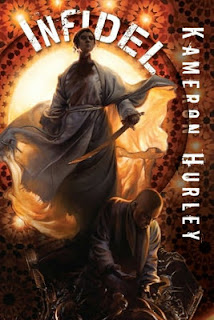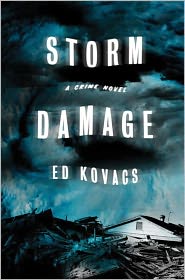 Nick Drake's critically acclaimed novel Nefertiti was shortlisted for the Crime Writers’ Association Ellis Peters Historical Crime Award; his Tutankhamun was a Publishers Weekly top 100 books selection. He has published two award-winning collections of poetry, and his play Success was performed at the National Theatre in London, where he is a literary associate. Drake's screenplays include the critically acclaimed Romulus, My Father (starring Eric Bana), which won Best Film at the Australian Film Awards in 2007.
Nick Drake's critically acclaimed novel Nefertiti was shortlisted for the Crime Writers’ Association Ellis Peters Historical Crime Award; his Tutankhamun was a Publishers Weekly top 100 books selection. He has published two award-winning collections of poetry, and his play Success was performed at the National Theatre in London, where he is a literary associate. Drake's screenplays include the critically acclaimed Romulus, My Father (starring Eric Bana), which won Best Film at the Australian Film Awards in 2007.His latest novel is Egypt: The Book of Chaos.
Recently I asked the author what he was reading. His reply:
Having spent many years in Ancient Egypt in my imagination, while writing my Egypt trilogy, I've been enjoying reading about other worlds and other parts of the world. InVisit Nick Drake's website.2010, I was lucky enough to be invited by Cape Farewell, the arts/climate change organization, to travel to Svalbard, the archipelago about 600 miles from the North Pole. Barry Lopez's Arctic Dreams is one of the most important, eloquent and deep-thinking books I have ever read; it's about how we make sense of landscapes, how landscapes confront us with who we really are as a species, and as individuals, and how beauty, terror and truth are to be found in places as extraordinary, hostile and above all precious, as the Arctic.
Climate Change holds a mirror up to us all, to how we live, and to our values; The New North by Laurence Smith and The Great Disruption by Paul Gilding aretwo impressive books that dare to look into the mirror of the future, and say honestly, cogently and thoughtfully what they see. The Arctic may seem remote, but what happens there because of what we do, or take from it, will always come back to haunt us. The Inuit say of us (that's to say, the industrial world) that we are the people who change nature; she is changing fast now; these two highly-informed books have the courage to think about what that's going to mean to us all, soon.
The Museum of Innocence by Orhan Pamuk is a brilliant novel about love, obsession, Istanbul, cinema, time and death. I couldn't put it down, returning every night to the mystery ofthe love story; it has such a powerful effect that I felt differently about being alive once I had finished it. The Stranger's Child by Alan Hollinghurst is also a masterpiece; set across decades in England, it's one of those rare novels where every line is a thing of beauty, somehow managing to draw together, with wit and grace and clarity, worlds of feeling and insight. I also loved Ali Smith's There but for the; she is the most ariel, the most daring of writers; the novel is gripping, and tells its stories from surprising, revealing angles, with incredible verbal vivacity, variety and zig-zag brilliance; wild and delightfully original writing.
Red Dust Road by Jackie Kay, the poet and novelist, is a memoir destined for classic status; with warmth, humour and candour it tells the acutely moving story of how she grew up in Scotland, the adopted black daughter of Helen and John Kay, how she traced her white birth mother and her Nigerian birth father, and what she found at the end of the red dust roads of Nigeria. It's a book about the strange complexities of identity, history, and love.
The Page 69 Test: Egypt: The Book of Chaos.
My Book, The Movie: Egypt.
--Marshal Zeringue



















































